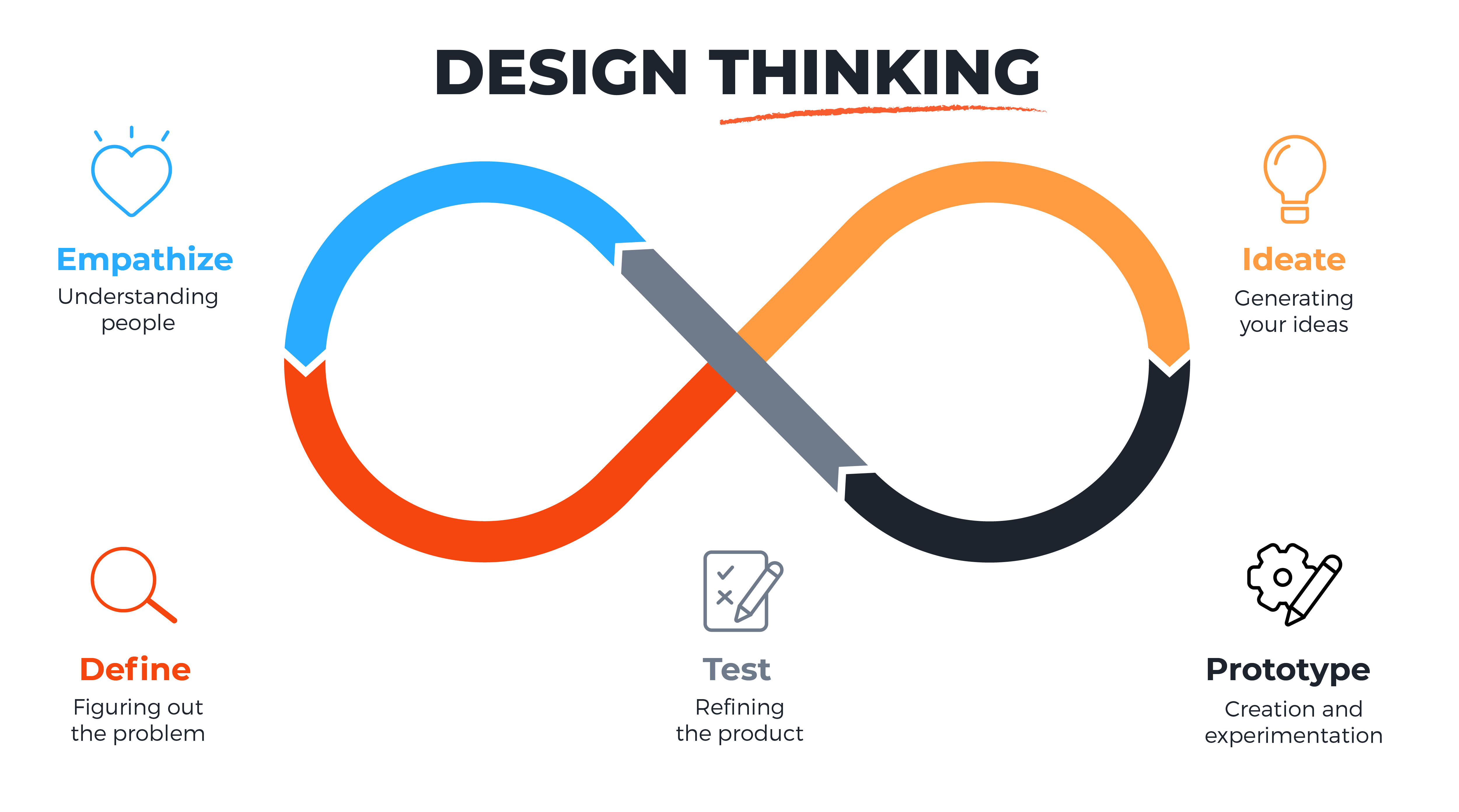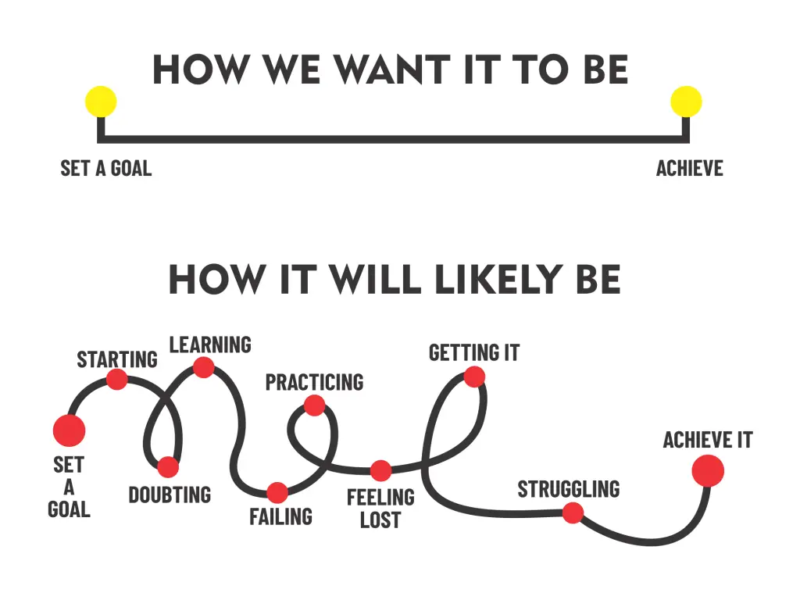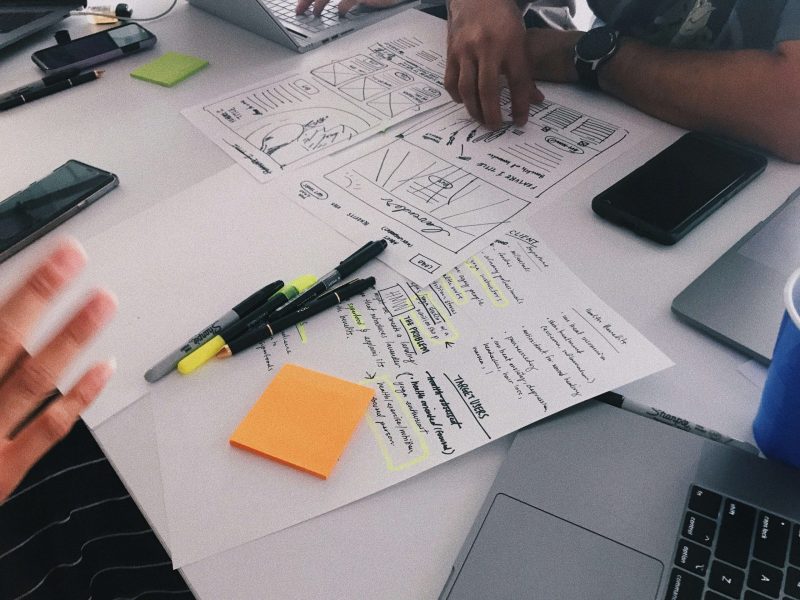A Comprehensive Guide
Design Thinking has become a cornerstone methodology for tackling complex problems and fostering innovation across various fields. This human-centered approach to problem-solving emphasizes empathy, creativity, and collaboration, making it an essential framework for anyone looking to create impactful solutions.
Origins and Evolution of Design Thinking
Design Thinking originated in the fields of industrial and visual design, evolving into a structured methodology aimed at solving real-world problems. It was later popularized by IDEO, a global design and innovation consultancy, which adapted the framework to be accessible for businesses, schools, and organizations worldwide. Today, Design Thinking is widely adopted to drive user-centric solutions in areas such as product design, service development, and social innovation.
The Core of Design Thinking
At its essence, Design Thinking is a problem-solving process that focuses on understanding and addressing the needs, desires, and challenges of the end user. It is built around five key stages:
- Empathize
- In this stage, the goal is to deeply understand the user’s experiences, pain points, and desires. This involves:
- Conducting interviews and surveys
- Observing user behavior in real-life contexts
- Creating empathy maps to synthesize insights
- Example: A team designing a mobile banking app might observe users struggling with complex navigation and note their frustration.
- In this stage, the goal is to deeply understand the user’s experiences, pain points, and desires. This involves:
- Define
- Based on insights from the empathy stage, teams clearly articulate the problem they aim to solve. This involves identifying root causes and framing the problem concisely.
- Key Activity: Developing a problem statement, such as: “How might we simplify the login process for users who struggle with remembering passwords?”
- Ideate
- This is the brainstorming phase, where teams generate a wide array of potential solutions. Creative tools like mind mapping, sketching, and collaborative workshops are commonly used.
- Best Practice: Encourage a “no idea is bad” mindset to foster innovation.
- Prototype
- Prototypes are tangible representations of ideas, allowing teams to test and refine their concepts. Prototypes can range from low-fidelity sketches to interactive digital mockups.
- Example: Creating a clickable prototype of a redesigned app interface to test usability.
- Test
- Testing involves gathering feedback from users to validate or refine prototypes. This stage is iterative, often leading back to previous stages for improvements.
- Outcome: Insights from user testing guide the final design, ensuring the solution aligns with user needs.
Why Use Design Thinking?
Design Thinking’s collaborative and iterative nature makes it a versatile approach for addressing diverse challenges. Its focus on empathy ensures that solutions are user-centric, while its structured framework encourages teams to think creatively and holistically. Here are some key benefits:
- User-Centric Solutions: By deeply understanding user needs, teams can design products and services that truly resonate with their audience.
- Example: The redesign of the “Share a Coke” campaign involved personalizing soda bottles with common first names, driving a significant increase in sales.
- Encourages Experimentation: Design Thinking embraces failure as a learning opportunity, encouraging teams to test and refine ideas without fear.
- Case Study: Google’s “Design Sprint” methodology, inspired by Design Thinking, helped teams rapidly prototype and validate ideas, leading to successful product launches.
- Fosters Collaboration: Bringing together diverse perspectives from cross-functional teams enhances creativity and problem-solving.
- Holistic Problem-Solving: Design Thinking considers the broader context of a problem, resulting in solutions that are not only innovative but also sustainable.
Applications of Design Thinking
Design Thinking’s versatility allows it to be applied across industries and disciplines. Here are some notable applications:
- Product Design: From smartphones to kitchen appliances, Design Thinking helps create intuitive and functional products.
- Service Design: Airlines and hospitality industries use Design Thinking to enhance customer experiences.
- Social Innovation: Nonprofits leverage this methodology to address challenges such as access to clean water or education.
Tools and Techniques in Design Thinking
To maximize the effectiveness of each stage, practitioners often use specialized tools:
- Empathy Maps: Visual frameworks for organizing user insights.
- Personas: Fictional representations of target users to guide design decisions.
- Journey Maps: Diagrams illustrating the user’s experience with a product or service.
- Rapid Prototyping Tools: Software like Figma or Sketch for creating interactive designs.
Conclusion
Design Thinking is not just a process but a mindset—a way of approaching problems with curiosity, empathy, and creativity. Focusing on the needs of the end-user and fostering collaboration, The framework enables teams to create solutions that are impactful, user-friendly, and sustainable. Whether you’re a designer, developer, marketer, or business leader, adopting this approach can drive meaningful innovation and success.
Recommended Resources:
Start your journey today and unlock the potential to solve even the most complex challenges with empathy and innovation.
Finally, I’d like to recommend The Design Thinking Life Playbook as a valuable resource for anyone who’s seeking to navigate the complexities of personal and professional life changes.



One thought on “What is Design Thinking”